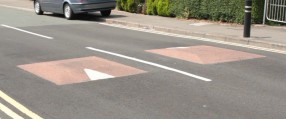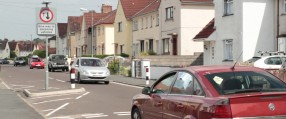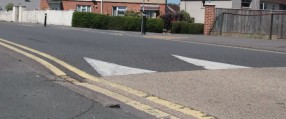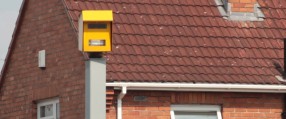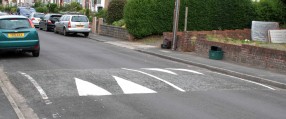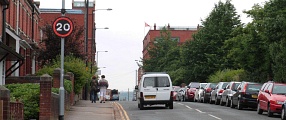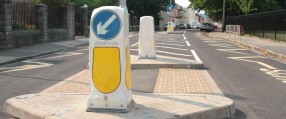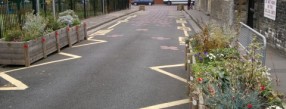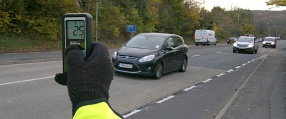Road Narrowing
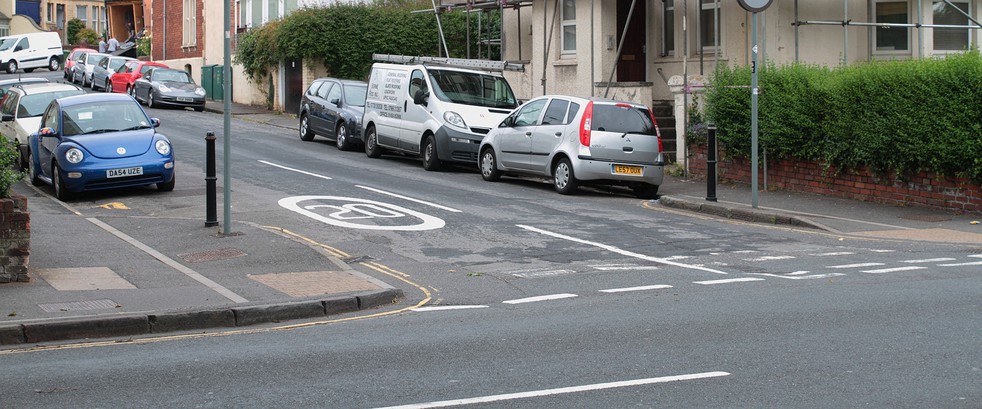
Road narrowing simply reduces the width of the road. This could be achieved in a number of ways, however the technique normally used in Bristol involves extending the curb at a junction entrance with a bollard on each side.
Motorists will need to drive more carefully in a narrowed section of road to keep their vehicle in the correct road position, which may result in slower vehicle speeds.
In addition, road narrowing can also be used to help pedestrians cross the road more easily. In this case, the kerb is dropped with tactile paving where the pavement slopes towards the road.
Disadvantages
- Not as effective as vertical treatments
- Managing water drainage could be complex and costly
- Cyclists may feel intimidated by some vehicle drivers' behaviour at road narrowing
Restrictions
- Road narrowing should not be used on roads or junctions with any heavy goods vehicle traffic
There's also some general restrictions to note for all schemes
Advantages
- Targets a specific part of the road
- Can be used on junctions
- Can prevent vehicle parking
- Make it easier for pedestrians to cross
- Emergency vehicles should be able to pass without slowing down
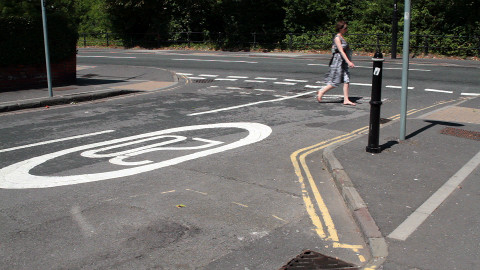
Effectiveness
Generally, horizontal treatments - such as road narrowing - are expected to reduce accidents by around 29%.
Advanced information
29% reduction in accidents is taken from Mountain, Hirst and Maher (2005). The study calculated accident reductions from various different types of traffic calming measures. Local authority and police data were used throughout Great Britain from 150 speed management schemes on 20 mph roads. Analysis is particularly strong, with correction for change in flow, accident trend and regression to mean.
References
Mountain, L., Hirst, W., Maher, M. (2005) Are speed enforcement cameras more effective than other speed management measures? The impact of speed management schemes on 30 mph roads. Accident analysis and prevention 37 pp. 742 - 754.
